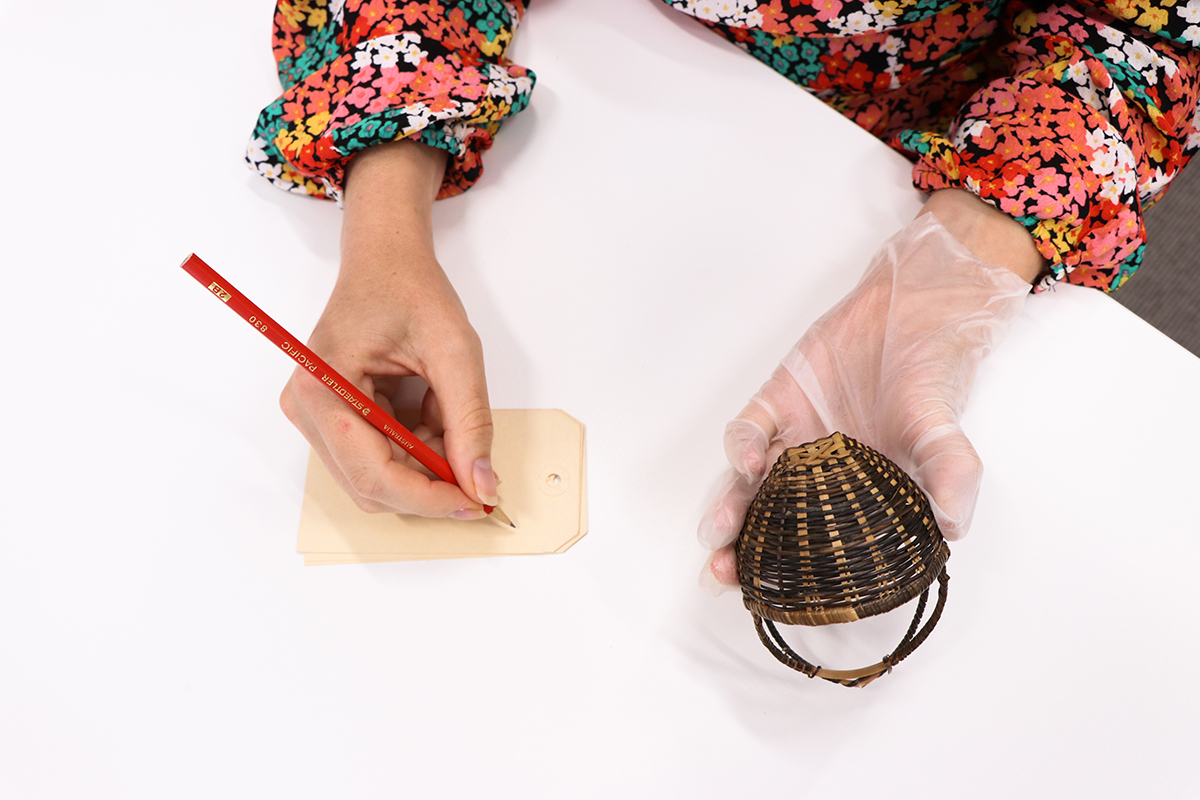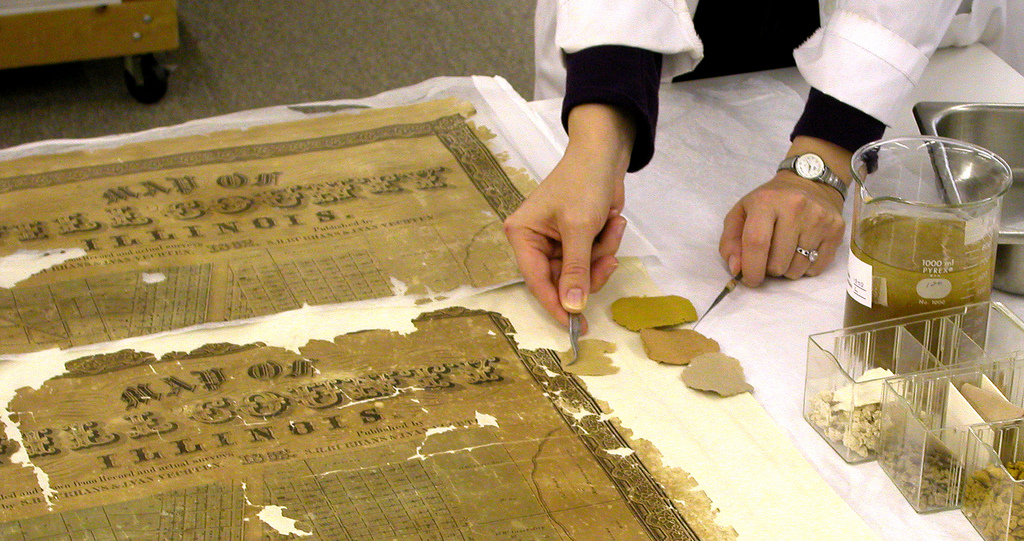Handling Museum Objects
Preventive conservation starts with careful handling. Proper handling is a matter of common sense and relies on understanding the weak areas on an object and thinking through all the risks associated with lifting and moving an object. With careful thought and preparation and a respectful attitude objects, accidents and damage can be avoided.
Objects handling guidelines should be included in procedures manuals and used to train all paid staff and volunteers when they start working at the museum.
General rules
- Ensure that people who will handle objects are properly trained
- Only handle a museum object when necessary
- Stop and think before handling an object. What are its structural weak points?
- Plan the route you will use to move the object and clear the passage first
- Prepare the space the object is being moved to before handling the object
- Don’t hurry
- Use both hands to support the object
- Avoid wearing dangling jewellery or loose sleeves
- Make sure hands are clean and wear fitted gloves where appropriate
- Don’t smoke, eat or drink while working with museum objects
- Do not use pens or sharp objects around objects
- Report and record any damage that occurs during handling
- If a breakage or damage occurs, secure loose or broken pieces in a labeled bag with your name and date
Areas of vulnerability
Museum objects should be handled with particular care; in many cases they are irreplaceable. Areas of vulnerability include:
- Handles which may be loose or previously repaired
- Protrusions which can catch or be knocked
- Areas of previous repair
- Top or crest rail of a chair
- Soft/powdery surfaces
- Loose components such as drawers, lids, doors, etc.
- Unwieldy shapes
- Large, floppy items
- Heavy items
- Brittle paper
- Ornate or gilded frames
- Paintings which do not have backing boards
- Unframed paintings
- Metal surfaces which are sensitive to tarnishing, such as hinges and clasps
- Sensitive surfaces such as photographs
- Gooey/sticky areas
- Lifting/buckling veneers
- Heavy items attached to lightweight items (such as heavy beads on a fine silk piece)
Equipment and materials
This equipment will help you when handling objects:
- Boards for supporting flat, flexible objects such as paper, textiles and beaded objects
- Trays – shallow plastic trays to place small items in
- Trolleys, dollies and pallet lifters for heavy objects
- Gloves – cotton or nitrile. Disposable nitrile gloves are preferable to use with slippery surface such as glass, ceramics and metal as they provide more grip and fit snuggly.
- Copysafe or polyester (Mylar) sleeves – useful for handling single paper items
- Ziplock bags – for smaller, durable items
- Small cushions/tubes filled with bean bag beans – used as cushioning between items in trays
- Foam blocks – used as cushioning or to lift framed works off the floor if stored temporarily against a wall
- Felt covered blocks – lift framed works off the floor if stored temporarily against a wall
- Acid free tissue – used for padding or separating items
- Protectafoam/Cellaire- thin foam used to line trays/boxes or as cushioning around items
- Cotton tape – used to tie loose areas during a move
Planning the move
- Inspect the object for areas of weakness
- Remove jewellery- rings can scratch, necklaces can swing around
- Look at the space you moving to – is it clear? Will the object fit through doors?
- Have you got a clear pathway to the new location?
- What is the safest way to lift the object?
- How many people do you need?
- Do you need a trolley?
- Do you need a tray?
- Have you got padding between objects?
Handling Museum Objects
You may also like …
Connecting to Collections
Object Handling Basics, 2013
Ontario Ministry of Culture, Heritage & Libraries Branch
Museum Note #6: Handling Museum Objects, 2005
National Parks Service
Museum Handbook, Chapter 6: Handling, Packing and Shipping, 1999


